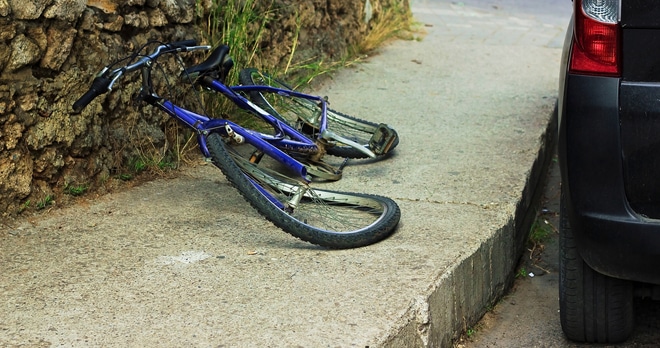“The most vulnerable road users”: the court’s approach

The accident
Mrs Sinclair, who was 58 at the time, sustained a catastrophic head injury and spinal fractures when she collided with a car near Tunbridge Wells in July 2011.
Mrs Sinclair had been out cycling for much of the afternoon. As she cycled around a bend in the road, she came close to the centre of the road. The Judge later found that she was standing up on her pedals and looked uncomfortable moments before the accident.
The single carriageway country road had a good surface and was 5 metres wide, making each carriageway 2.5 metres wide, and there were no lane markings. The Volvo XE90 being driven by Mrs Joyner was 2.1 metres wide.
Mrs Sinclair’s front tyre made contact with the rear offside tyre of the Volvo. After the glancing blow between the tyres, Mrs Sinclair could not regain control of her bicycle and fell off to the right hand side. As a result, Mrs Sinclair has a permanently impaired consciousness level and is fully dependent for all her care needs.
A hearing was held in June 2015 to determine liability.
The decision
Mrs Sinclair’s case, brought by her daughter, was that Mrs Joyner had been negligent in failing to properly assess the hazard presented by Mrs Sinclair when she came into Mrs Joyner’s view, and had failed to stop her car in time to allow Mrs Sinclair to pass by safely. It fell to the judge, Mrs Justice Cox, to apply the rule to Mrs Joyner’s actions; whether they were of the standard of the reasonable, prudent driver in the circumstances which existed at the time.
The hearing determined that Mrs Joyner was driving at a reasonable speed along a road she knew well, with her family in the car, on a warm summer’s evening in a quiet rural location. Her Volvo was as far over to the near side of her carriageway as possible.
The Judge found, however, that Mrs Joyner had failed to properly assess the hazard that the cyclist presented and failed to stop when it was necessary to do so, and when she had time to do so, to allow Mrs Sinclair to cycle past safely. The Judge found that Mrs Joyner was not, in fact, keeping a proper lookout as she came around the bend, and her assessment of the risk that Mrs Sinclair presented was negligent. Mrs Justice Cox stated that motorists have to anticipate hazards in the road, particularly from vulnerable road users, and to be ready to react to them.
In fact, the cyclist, Mrs Sinclair, had deviated onto the driver’s, Mrs Joyner’s, side of the road, but that did not relieve the driver of the duty of care, as the cyclist had obviously been in difficulty when the driver first spotted her.
The Judge found that the reasonable prudent driver in Mrs Joyner’s position would have applied the brakes immediately and stopped, in order to allow the cyclist sufficient room to ride past. The Judge rejected the argument that Mrs Sinclair would have fallen over anyway without there having been any contact between the tyres.
Contribution of the cyclist
Primary liability was established in favour of the cyclist, but Mrs Sinclair’s representatives accepted contributory negligence on her behalf. But to what extent exactly?
The Court ruled that the car clearly had a lot more potential to cause damage than the bicycle did, and there was a very high risk of serious injury to Mrs Sinclair if the Volvo were to collide with her, as in fact it did. Mrs Sinclair’s contributory negligence was therefore assessed at 25%, meaning that any compensation she would receive would be reduced accordingly.
It was also noted that Mrs Sinclair was not wearing a cycle helmet at the time of the accident. There was no medical evidence produced to show that failing to wear a helmet made Mrs Sinclair’s injuries worse. It was also mentioned in passing by Mrs Sinclair’s Barrister that no Court has yet decided that failing to wear a helmet actually amounts to contributory negligence, although they have come close.
“The most vulnerable road users”
When considering The Highway Code, the Judge placed particular emphasis on paragraph 204, which states that cyclists are among those seen as ‘the most vulnerable road users’. Paragraph 212 of The Highway Code, which states ‘on passing motorcyclists and cyclists, give them plenty of room’, does not only apply to overtaking, as it is set in a section of the Code addressing in general terms the vulnerability of cyclists (amongst others) and the need for extra care.
What does this decision mean?
This judgment is particularly supportive in favour of cyclists. This decision may have come as a surprise to many, given that the collision occurred on the motorist’s side of the road. However, in this case, the Judge demonstrated an approach which serves to protect cyclists as a vulnerable category of road users. The decision promotes the protection of the vulnerable and is a small but important step towards ensuring the safety of vulnerable road users and encouraging motorists to take more care when sharing the road with cyclists.